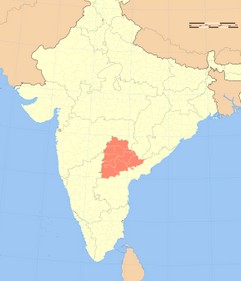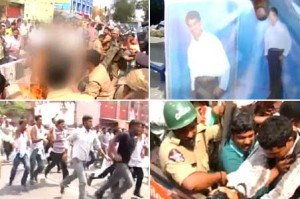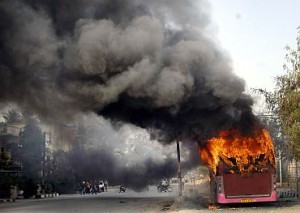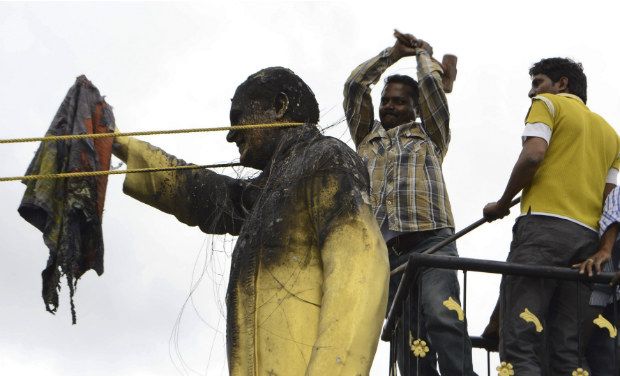Telangana State, India–where approximately 5000 Indians have self immolated for the cause of an independent state–has unanimously  elected its first Speaker of the Telangana Assembly Tuesday, unopposed, one week after the creation of India’s 29th state.
elected its first Speaker of the Telangana Assembly Tuesday, unopposed, one week after the creation of India’s 29th state.
Protests both for and against the formation of a separate Telangana state have often been fierce over the years. Approximately 5000 Indians have self immolated for the cause. The first wave of large numbers of self immolations took place in 1990 protesting the Reservation in India–a  system whereby the government sets aside a percentage of seats for “backward” and underrepresented communities, which discouraged the merit-based system and encouraged vote bank politics while diminishing social gaps.
system whereby the government sets aside a percentage of seats for “backward” and underrepresented communities, which discouraged the merit-based system and encouraged vote bank politics while diminishing social gaps.
Then, in 2000 an estimated 1,451 self immolations were recorded protesting the Reservation, followed in 2001 by 1,584 self immolations.
In 2012 another large wave of self immolations took place by protesters demanding Telangana statehood. Groups advocating the movement claimed at least 800 Indians immolated themselves  between 2010 and 2013. Most of the self immolators were reported to be students.
between 2010 and 2013. Most of the self immolators were reported to be students.
The elected speaker of the assembly is Telangana Rashtra Samiti (TRS) MLA, S. Madhusudanachari. Madhusudanachari was a member of the TRS since its 2001 foundation and is a trusted lieutenant of TRS chief, K. Chandrasekhar Rao. He had previously been an MLA of Telugu Desam Party (TDP) between 1994 and 1999. He worked in TDP from 1982 to 1995 and subsequently sailed with NTR-TDP (Lakshmi Parvati) after change of guard in the party
The conflict over Telangana statehood dates back to the Independence of India in 1947. The Indian government annexed Hyderabad into the Indian Union against the will of the Hyderabad monarch. Telugu-speaking areas were carved out of Madras and Andhra State was created in 1953. Beginning in 1946, though, a violent peasant revolt led by the Indian Communist Party (CPI) began, called the Telangana Rebellion. In 1951 the movement began to seek a more peaceful, moderate strategy, seeking ultimately to invalidate the conjoinment of Telangana and Andhra.
In 2009, the Indian government began the process of the formation of Telangana state, sparking violent opposition which caused the government to put its plans on hold. Protests were impassioned on both sides, and included the hundreds of self immolation protests demanding separate statehood.
The resolution to form a separate Telangana state was passed in July 2013 by a unanimous Congress, and the state was officially formed June 2.
By Day Blakely Donaldson
